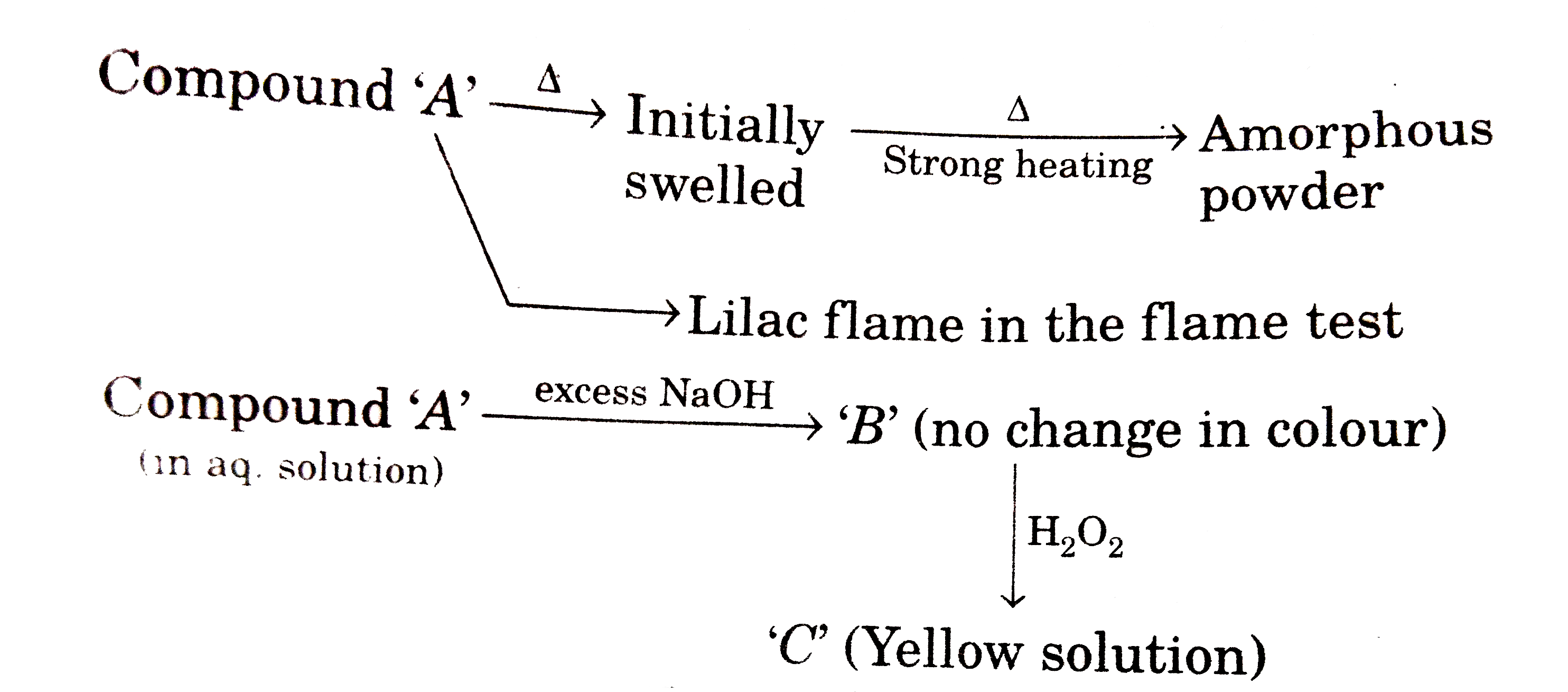Discuss the pattern of variation in the oxidation states of (a)B→TI and (b) C→Pb.
Video Solution
Text Solution
(i) B and Al have no d-or f-electrons. Therefore, they do not exhibit inert pair effect. Consequently, they slow show an oxidation state of +3 only due to th persence of two electrons in the s-and one electron in the p-orbital of the valence shell. In contrast, all other element from Ga to Tl contains either only d-or d- and f-electrons and hence show two oxidation states of +1 and +3 due to inert pair effect. Further, as the number of d- and f-electrons increases down te group , the inert pair effect becomes more and more pronounced. In other words, as we move down the group from Ga to Tl, the stability of +1 oxidation state increases (i.e, Ga<ln<Tl) while that of +3 oxidation state decreases (i.e., Ga<ln>Tl). Thus, +I oxidation state of Tl is more stable than its +3 oxidation state.
(ii) Carbon and silicon have no d-or f-electrons.Therefore , they do not exhibit inert pair effect.
Consequently they show an oxidation state of +4 due to the presence of two electrons in the s- and two electrons in the p-orbital of the valence shell. In contrast , all other elemen from Ge to Pb contain either only d- or f-electron and hence show two oxidation states of +2 and +4 due to inert pair effect.
Further , as the number of d- and f-electrons increases , the inert pair effect becomes more and more pronounced. In other words, as we more down the group from Ge to Pb, the stability of +2 oxidation state increases (i.e., Ge<Sn<Pb) while that of +4 oxidation state decreases (i.e., Ge>Sn>Pb).
Thus, +2 oxidation state of Pb is more stable than its +4 oxidation state.
|
Topper's Solved these Questions
- SOME p-BLOCK ELEMENTSBook:PRADEEPChapter:SOME p-BLOCK ELEMENTSExercise:NCERT EXEMPLAR PROBLEMS WITH ANSWER, HINTS AND SOLUTIONS (MULTIPLE CHOICE QUESTION-I)
Explore 15 Videos
- SOME p-BLOCK ELEMENTSBook:PRADEEPChapter:SOME p-BLOCK ELEMENTSExercise:NCERT EXEMPLAR PROBLEMS WITH ANSWER, HINTS AND SOLUTIONS (MULTIPLE CHOICE QUESTION-II)
Explore 6 Videos
- SOME p-BLOCK ELEMENTSBook:PRADEEPChapter:SOME p-BLOCK ELEMENTSExercise:NCERT QUESTIONS AND EXERCISES WITH ANSWERS (NCERT INTEXT SOLVED QUESTIONS)
Explore 27 Videos
- SOLID STATE Book:PRADEEPChapter:SOLID STATE Exercise:Advanced problems
Explore 19 Videos
- STATES OF MATTER : GASES AND LIQUIDESBook:PRADEEPChapter:STATES OF MATTER : GASES AND LIQUIDESExercise:VIII. ASSERTION-REASON TYPE QUESTIONS (TYPE-II)
Explore 12 Videos
Similar Questions
Knowledge Check
The common oxidation states of Ti are
A+2,+3,+4B+2,+3C+3,+4D+3,−4The common oxidation states of Ti are
A+2, +3B+3, +4C-3, -4D+2, +3, +4Predict the highest and lowest oxidation state of (a) Ti and (b) Tl
Aa[0,+3]b[0,+2]Ba[+3,0]b[+4,0]Ca[+4,0]b[+4,0]Da[+4,+2]b[+3,+1]
Account for the variation of acidic character with increases in the oxidation state of central atom
View SolutionName the following:
(a) A transition metal which does not exhibit variation in oxidation state in its compounds.
(b) A compound where the transition metal is the +7 oxidation state.
(c) A member of the lanthanoid series which is well known to exhibit +4 oxidation state.
(d) Ore used in the preparation of Potassium dichromate.
View SolutionPredict the maximum and minimum oxidation states for (i) Cl (ii) Ti
View Solution
The compound 'B' is having oxidation state of:
View SolutionWhat is the oxidation state of osmium in 7B and 7C, respectively ?

View Solution